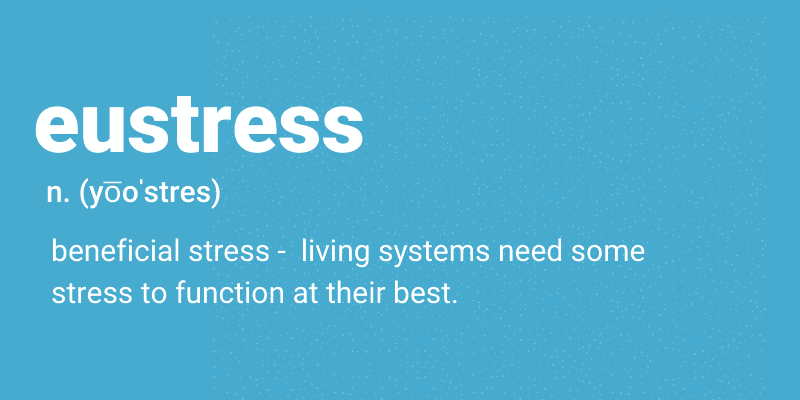How to use active recovery for increased performance

The real story about Rest Days: How to recover like a Boss!
You might be an avid exerciser, putting eight hours a week into your regular training, but how do you get the most out of the 160 hours you have left?
The most obvious answer is to rest. The intense workout itself is only the start of a chain of events that moves you one step closer to your goal. It’s the rest in between workouts that your body makes those changes a reality.
But not all rest is equal. When you think of rest, you might picture beach hammocks and mai tais, but if increased performance, health, and vibrancy are your goals, active rest days are probably a better choice.
What is Active Rest and how can it promote increased performance?
Within recovery, there are two basic types:
1. Passive recovery - a complete relaxation day with no physical activity, used as full rest between workouts.
2. Active recovery - the strategic use of light or moderate activity in the space between your hard training schedule to reduce fatigue and promote increased performance.
The scientific literature on the topic is difficult to pin down because active rest is a broad topic. However, in most conditions where researchers compare active rest to complete passive rest, more activity improves effects on performance and healing.
Examples of active recovery vs passive recovery:
Back Pain
In dealing with back pain, when doctors give patients the advice to keep up their routine activity, they do better than patients told to stay in bed.
Additionally, Directed exercise beat complete rest and other non-surgical interventions.
Cycle Tests
In the short term, staying lightly active between high-intensity intervals on a cycle test, while running, or while swimming, consistently beat passive techniques like total rest and massage.
Heavy Training
A lighter active recovery session involving the same muscles immediately after heavy training may improve exercise performance and physical fatigue in your upcoming workouts.
What is the best active recovery workout for your rest days?
The type of rest that will serve you best depends on what you’re resting for, but here are a few suggestions you can apply to make your active rest a powerful physical performance tool.

The author taking his 1-year-old son Dylan on a bike ride for an active rest day. Although it may not directly improve his deadlift or squat, it adds joy, connection, and healthy activity that support recovery general health, longevity, and recovery.
Active Recovery Ideas:
1. If it sparks joy and works up a sweat, do it.
Whether you’re looking for a more balanced and vibrant life or athletic victory, activities that connect you with your friends, community, and passion make you happier and reduce emotional stress that interferes with performance.
2. Consider practicing specific elements of your training at a more manageable pace.
Going too light can be so different from competition that it’s not good practice. Still, you might benefit from working on specific elements of a lift or starting light with new exercise variations you’ll bring into your program later.
3. If you spend a lot of training time on one thing, consider cross-training to fill in the gaps that arise from single-minded dedication.
For example, extensive research has shown that trained runners benefit from strength training. Since running long distances exclusively comes at a cost of bone and muscle strength, strength training helps the athlete counteract that undesirable effect for the long term. Similar trade-offs plague many sports.
4. Finally, don’t overthink it (overthinking is its own form of stress).
What if you’re unsure of how to add active rest and are overwhelmed by the options?
Start by adding or changing one of the workouts in your training week to something that is similar to what you’re already doing, but cut in half how much you do and how hard you do it.
During your next full workout, and after a couple of weeks, evaluate how your body has responded.
Rethinking “Stress” when creating your training plan
Getting more from your training with active rest may sound appealing, but you’re probably asking yourself an excellent question:
“If I get stronger by recovering from stress, why would I add more stress that I just have to recover from?”
Even with all the research and the practical experience of many coaches and athletes, it’s intuitive that more rest would be more restful. However, stress isn’t an evil thing we have to avoid.

Hans Selye- an early pioneer in stress science- coined the term ‘eustress’ to describe the idea that living systems need some stress to function at their best. Eustress benefits you because it is good stress. Too much stress is a problem, and most of us are on the ‘too little’ end of that curve.
Heart Health, Activity, and Work
Several famous studies have found that even having a more active day job, without any additional exercise, improves health outcomes. For instance, in a famous 1966 study in the UK, traffic conductors and mail carriers— who have to move around throughout the day—were found to have better heart health and longevity than drivers and mail clerks who sat down for their work.
Who We Were Then and Who We Are Now
Trying to separate what we evolved to do from where we are now, scientists have studied modern hunter-gatherers like the Hadza of Tanzania, who stay mostly free of chronic illnesses. The Hadza are physically active - dragging, hunting, carrying - for an average of an hour and a half each day: almost five times the recommended minimums .
And only one in five American adults meet even those minimums.
Yet, many of us are privileged to choose how we move. Understanding that everyone’s needs and stresses are different, if we can find a form of active rest that helps give our bodies the benefits of eustress, improving our whole quality of life and our performance, all the better.
Is “Real” Rest even better? The importance of recovery after exercise
With all these benefits from active rest, however, complete rest may sometimes be the better choice.
Some trainees- especially endurance athletes putting in 2-3 hour-long workouts almost every day- may already push their limits.
If you have any concerns about whether you might need more or less work, start by adding one active rest day a week for 2-3 weeks while changing nothing else about your routine.
Treat it like an experiment, and let the results guide whether you keep it in or cut volume even more.
“What About “off” days?
For most trainees, active rest shouldn’t replace every “off” day in your training calendar. The low-to-moderate intensity exercise option provides trainees a helpful set of tools, but complete rest from training is still an effective mental and physical reset.
Unfortunately, there is no scientifically proven best number of full-rest days... that will depend on the trainee, their sport, and the intensity of their training sessions. Still, I strive to get at least one day of complete rest a week in every trainee’s schedule.
What about Illness and Major Life Upheavals?
Illness and major life stressors may also call for complete rest. For example, if you have to train at a public gym and you’re contagious or otherwise under orders from a doctor, take a break.
On the other hand, trainees who have a cold or mild headache- “neck-up” symptoms- can often train as usual or replace their planned hard session with active rest.
Active Rest for a Balanced Life
Whether your goal is to improve your athletic performance or stay healthy into your old age, remember that there’s an entire range of activity between doing nothing and hard training.
If you struggle to stay balanced in your training, bouncing from hard push to hard crash, never slowing down to enjoy the strength your activity is bringing you, consider taking an active rest day and let me know how it goes!
An expert in sports nutrition and strength training, CJ Gotcher helps professionals-in-transition design a lifestyle and career that matches their mission and purpose. His philosophy is to start with the client and draw from the science to deliver strength for life. Find other articles written by CJ on his coach profile. Whether you use a barbell or bodyweight, he will help you draw from the science to develop both physical and mental strength for life.
Every month you'll get access to the newest recipes and articles!




